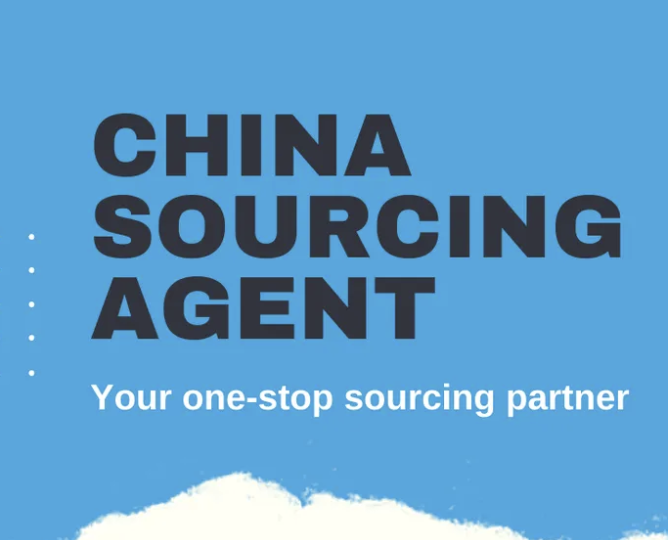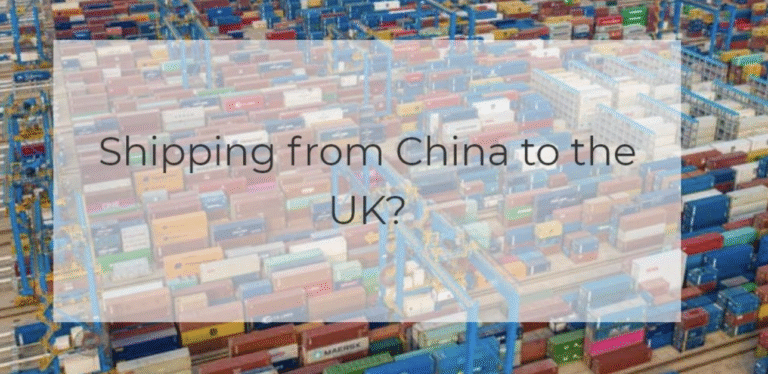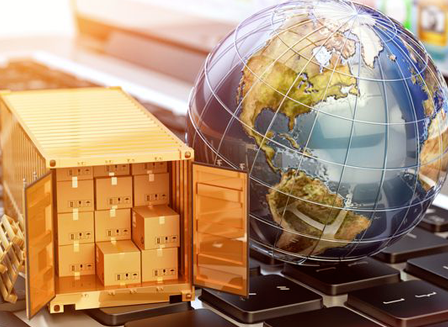The Largest Port in Southern China: Gateway to Global Trade
When it comes to global commerce and the unstoppable flow of goods, few regions command as much attention as Southern China.
Positioned at the intersection of some of the busiest maritime routes in the world, this region plays a pivotal role in international trade.
At the heart of it all lies the largest port in Southern China, a megastructure that isn’t just a logistics hub—it’s a symbol of China’s trading prowess and a beacon for businesses around the globe.
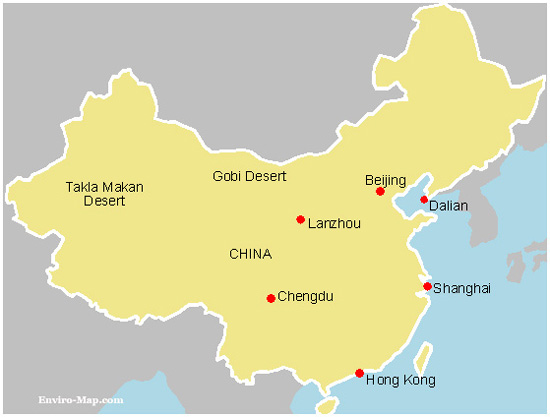
Whether you’re a seasoned importer, a startup exploring China’s vast manufacturing capabilities, or simply curious about how your smartphone made its journey from Shenzhen to Seattle, this article is your ultimate guide.
From understanding which port claims the title of “largest” to the reasons behind its explosive growth, this in-depth guide breaks down everything you need to know.
More importantly, Read This Review Before You Buy any shipping service or product linked to Chinese exports. Knowing where your goods are coming from—and through—is the first step to smarter trade.
In this post, we’ll walk you through the port’s economic impact, its infrastructure, key statistics, and even how to tap into reliable sourcing agents like Simoosourcing to streamline your supply chain.
Expect real-world examples, insider insights, and a look at what the future holds for this maritime titan. Let’s set sail.
Table of Contents
Overview of the Southern China Region
Southern China isn’t just another region—it’s an economic engine that has fueled global manufacturing for decades. Home to sprawling industrial cities like Shenzhen, Guangzhou, and Foshan, this part of China is often referred to as the “World’s Factory Floor.” But beyond manufacturing, it’s the logistics infrastructure that sets Southern China apart.
The region’s unique geographical location offers direct access to the South China Sea, making it a key node in the Maritime Silk Road and China’s Belt and Road Initiative.
Its proximity to Southeast Asia and other major Asian markets positions it as a strategic launching pad for global exports. Think of it as the neck of a funnel—billions of dollars’ worth of goods flow through here every single day.
Moreover, the Pearl River Delta (PRD)—a cluster of cities including Shenzhen, Hong Kong, and Guangzhou—is one of the most densely populated and economically active zones in the world.
It contributes massively to China’s GDP and is a hotbed of technological innovation and industrial growth. Ports in this region don’t just serve China—they serve the world.
But among these powerful economic centers, one port stands taller, handles more, and connects broader. It’s not just the largest in Southern China—it’s one of the busiest in the entire world.
Ready to find out which one?
Identifying the Largest Port
So, which facility holds the coveted title of the largest port in Southern China?
That honor goes to the Port of Shenzhen. Nestled in the Guangdong province and adjacent to the iconic Hong Kong Port, the Shenzhen Port has rapidly evolved from a modest fishing village into a mega maritime powerhouse.
Covering multiple terminals across its sprawling coastline, the Port of Shenzhen isn’t a single dock—it’s a port complex composed of several major areas including Yantian, Shekou, Chiwan, and Dachan Bay. Combined, these terminals form a logistical beast capable of handling an astronomical volume of cargo.
According to the latest industry stats, the Port of Shenzhen consistently ranks among the top five busiest container ports globally, with an annual throughput of over 27 million TEUs (Twenty-foot Equivalent Units). That’s billions of dollars in cargo, moving through one gateway.
Its infrastructure supports the loading and unloading of the world’s largest cargo vessels, making it an essential artery in the body of international commerce.
What sets Shenzhen apart isn’t just scale—it’s the port’s integration with China’s manufacturing hubs and its digital-forward, efficiency-driven operations.
This allows for seamless transitions between production lines and cargo ships, shortening lead times and reducing costs. In short, if your product says “Made in China,” chances are it once passed through Shenzhen’s port waters.
Shenzhen Port: A Closer Look
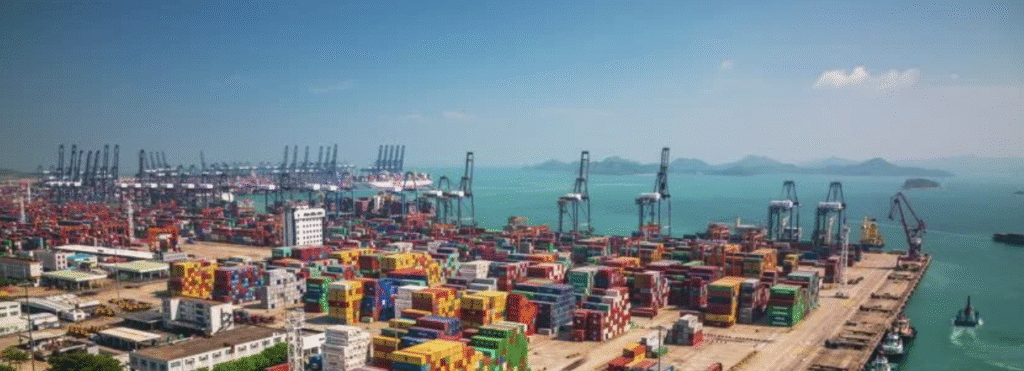
History & Evolution
Believe it or not, Shenzhen didn’t even exist as a city before 1979. What was once a quiet fishing town became China’s first Special Economic Zone (SEZ) in 1980. With that bold move, China launched an experiment that would turn Shenzhen—and its port—into a global trade hub within decades.
The port’s growth mirrored the city’s transformation. As factories and tech companies began sprouting up across Shenzhen, the demand for an international-standard port surged. This led to the development of several terminals under the Shenzhen Port umbrella, each strategically designed to cater to different shipping needs—containers, bulk cargo, logistics, and even cruise ships.
By the late 1990s, Shenzhen Port was already playing in the big leagues. Thanks to heavy government investment and innovative public-private partnerships, the port expanded its reach both physically and operationally. New terminals like Yantian and Dachan Bay were added, equipped with world-class cranes, automated systems, and deep-water berths.
Today, Shenzhen Port isn’t just the largest in Southern China; it’s a technological marvel and a template for port modernization worldwide. It’s even embraced green tech initiatives to reduce emissions and improve energy efficiency, setting a new benchmark for environmental responsibility in global shipping.
Why It’s the Largest: Key Metrics
Let’s break down the numbers and show exactly why Shenzhen wears the crown. In logistics, size isn’t just about surface area—it’s about capacity, speed, and connectivity. Below is a quick snapshot of Shenzhen Port’s impressive stats.
| Metric | Shenzhen Port (2024) |
|---|---|
| Annual Cargo Throughput | 260 million tons |
| Container Throughput (TEUs) | 27.4 million |
| Number of Terminals | 9 major terminal zones |
| Port Area Coverage | 130 km of coastline |
| Berths | 200+ (including deep-water) |
| Largest Ship Handled | 24,000+ TEU class vessels |
| Connected Shipping Routes | 560+ international lines |
| Daily Ship Traffic | 500+ vessel movements |
What truly sets Shenzhen apart is its throughput efficiency and capacity to scale. It’s a highly integrated ecosystem where customs, logistics companies, and manufacturing partners are aligned for speed. For example, the Yantian terminal alone can process more than 13 million TEUs annually, making it one of the busiest container facilities globally.
Whether you’re shipping electronics, furniture, apparel, or automotive parts, Shenzhen offers unparalleled efficiency and reliability. It’s built not just for today’s trade demands but for tomorrow’s megatrends in global commerce.
Advantages of Shenzhen Port
When evaluating the largest port in Southern China, it’s not just about raw numbers—it’s about the why. Why do thousands of companies choose Shenzhen over other ports? Why has it become a dominant hub in the international shipping world? The answers lie in its strategic advantages that create unmatched value for exporters, importers, and manufacturers alike.
Strategic Location
Shenzhen’s geography is a goldmine. Sitting on the eastern edge of the Pearl River Delta, it provides direct access to the South China Sea, making it an ideal location for ocean freight headed to Europe, the Americas, Africa, and the rest of Asia. Its proximity to Hong Kong enhances its value, offering dual port options for businesses that require flexibility or are navigating customs and taxes.
This strategic location also means quicker transit times. Ships departing from Shenzhen have shorter and more direct sea routes, reducing lead times significantly. For businesses running tight supply chains, every hour counts—and Shenzhen delivers.
Multimodal Connectivity
Connectivity is where Shenzhen Port really shines. It’s not an isolated dock—it’s the beating heart of a multimodal transportation network that includes highways, railways, and airports. Cargo can be moved seamlessly from inland factories in Dongguan, Guangzhou, or even central China via expressways and high-speed freight railways.
The port connects directly to the Shenzhen Bao’an International Airport, adding an air freight option for high-priority shipments.
This level of connectivity makes Shenzhen a dream for logistics companies and import-export managers. Whether you’re moving bulk goods or perishable items, there’s always an optimized route available.
Technological Integration
In recent years, Shenzhen Port has adopted cutting-edge port technologies to speed up processes, reduce manual intervention, and cut costs. Automated cranes, AI-driven scheduling systems, blockchain-powered tracking, and smart customs clearance have turned Shenzhen into a “smart port.”
This innovation drastically reduces human error, eliminates delays, and enhances transparency across the shipping process.
Combined, these advantages make the Port of Shenzhen not only the largest in Southern China—but arguably the most efficient and forward-thinking as well.
Comparison with Other Ports in Southern China
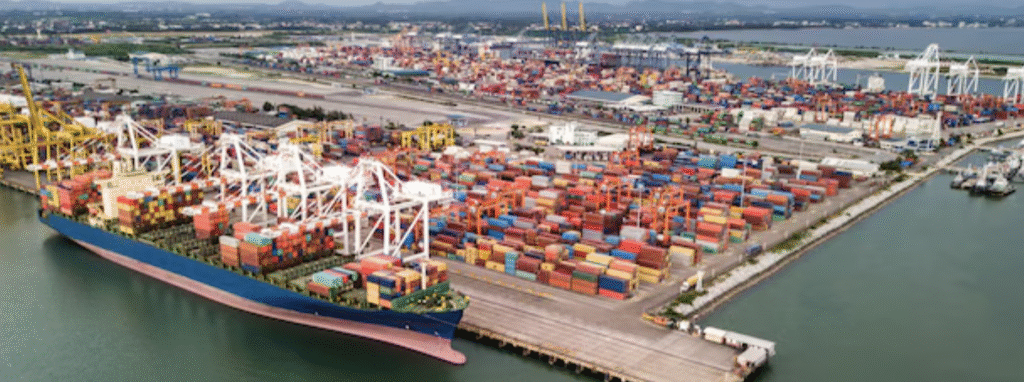
Shenzhen may be king, but it’s surrounded by strong contenders. Southern China is home to several influential ports, including Guangzhou Port, Hong Kong Port, and Xiamen Port. Each of these serves vital economic roles and handles millions of tons of cargo annually. But how do they stack up against Shenzhen? Let’s break it down.
Guangzhou Port
Located just northwest of Shenzhen, Guangzhou Port is one of the oldest and most important trading ports in China. It ranks just behind Shenzhen in terms of cargo throughput, moving approximately 23 million TEUs annually.
It serves industries in central and western China, making it a vital inland connection. However, it doesn’t quite match Shenzhen’s international volume or automation capabilities.
Hong Kong Port
Once a leader in global shipping, Hong Kong Port has seen a decline in recent years due to high operating costs and tighter regulations. Still, it remains a strong alternative due to its free-trade status and excellent customs procedures. It handles around 18 million TEUs per year, but it’s more focused on transshipment than direct cargo origin.
Xiamen Port
Xiamen Port is growing fast and serves as a major player in cross-strait trade with Taiwan. While smaller in scale, its strategic role in specific logistics niches cannot be ignored. Its container volume is around 11 million TEUs, and while it’s efficient, it’s still not at Shenzhen’s level in terms of infrastructure or connectivity.
Here’s a quick table for comparison:
| Port | Annual TEUs | Focus | Key Strengths |
|---|---|---|---|
| Shenzhen | 27.4 million | Global exports/imports | High-tech, speed, strategic location |
| Guangzhou | 23 million | Domestic & export | Proximity to inland China |
| Hong Kong | 18 million | Transshipment | Free-trade, excellent customs |
| Xiamen | 11 million | Taiwan trade | Specialized routes, growing investment |
As this comparison shows, Shenzhen outpaces its peers across nearly every measurable metric—making it the undisputed leader in Southern China.
Real-World Examples & Case Studies
Numbers are great, but nothing illustrates impact better than real-world use. The Port of Shenzhen is trusted by the biggest names in logistics and retail. Global companies such as Maersk, CMA CGM, Walmart, and Apple all rely on Shenzhen’s capacity and speed to power their global operations.
Major Shipping Companies Using Shenzhen
International shipping giants have invested heavily in Shenzhen’s terminals. For instance, Maersk operates regular services via Yantian and Chiwan terminals, optimizing delivery times from China to Europe and North America. They praise the port’s streamlined customs clearance and its commitment to punctuality.
CMA CGM uses Shenzhen as a transshipment point for South East Asia-bound goods. With Shenzhen’s expanded berthing capacity, even mega-ships (over 24,000 TEUs) can dock with ease, reducing rerouting delays.
Success Story: Tech Route Efficiency
A well-known electronics brand based in Shenzhen (rumored to be Apple’s supplier) was facing delays when routing shipments through Hong Kong. By shifting to Shenzhen Port’s Yantian terminal, they cut shipping time by 48 hours and saved over $1.2 million annually in logistics costs. The reason? Faster customs processing, reduced cross-border bureaucracy, and better scheduling options.
E-commerce Boom
Platforms like Alibaba and JD.com utilize Shenzhen Port to power their global e-commerce expansion. During high-volume seasons like Singles’ Day or Black Friday, Shenzhen becomes the center of freight forwarding activities, handling tens of thousands of e-commerce containers each day. This scalability during peak demand is a testament to its design efficiency and resilience.
Sourcing & Partnering via Shenzhen Port
If you’re sourcing products from China, understanding Shenzhen Port’s role is non-negotiable. But having a trusted partner on the ground can make the difference between chaos and seamless operations. That’s where companies like Simoosourcing come into play.
The Role of Sourcing Agents
A sourcing agent is like your eyes and ears in China. They help you locate reliable suppliers, negotiate favorable prices, oversee quality inspections, and manage shipments. But not all sourcing agents are created equal. Some disappear after a contract is signed. Others, like Simoosourcing, stick around for the entire journey.
Based in China and deeply connected to the manufacturing networks of Southern China, Simoosourcing provides end-to-end sourcing solutions. They not only assist with procurement but also navigate customs, shipping, and even product development.
Whether you’re importing consumer electronics, fashion, or home goods, partnering with a sourcing agent ensures that your supply chain is optimized and transparent. Best of all, agents like Simoosourcing operate close to Shenzhen Port, allowing them to coordinate directly with terminal authorities and logistics providers.
Why It Matters
In international trade, minor delays lead to major losses. Working with professionals who understand how to leverage Shenzhen’s strengths means you’ll enjoy faster lead times, fewer customs hiccups, and better cost efficiency.
If you’re entering the Chinese sourcing game—Read This Review Before You Buy or sign contracts with any supplier. A knowledgeable partner is key, and Shenzhen is where the smart money flows.
Read This Review Before You Buy: Why Shenzhen Matters
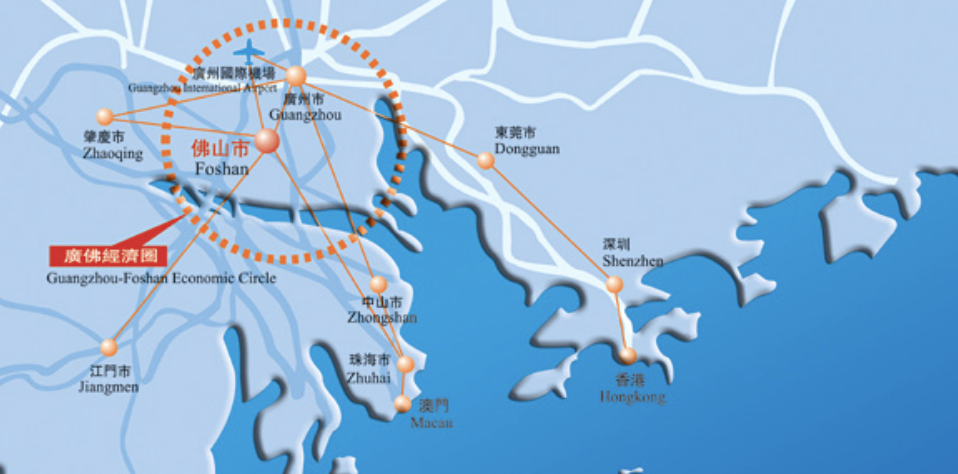
If you’re in the market for international shipping or Chinese sourcing, read this review before you buy. The choices you make around ports and logistics partners can either skyrocket your business or drag it down with delays, hidden fees, and quality issues.
Why Shenzhen Is a Game-Changer
Shenzhen Port isn’t just the largest in Southern China by size—it’s the best by performance. You’ll find other ports that offer lower fees, and you might hear some tout Hong Kong’s efficiency, but when you tally up speed, reliability, technology, and strategic positioning, Shenzhen leads the pack. It’s not hype—it’s proven by numbers, global company endorsements, and successful supply chains.
From the latest iPhone components to custom apparel for Amazon sellers, Shenzhen is the invisible engine behind millions of businesses. If you’re sourcing from China, odds are your products either originate from, or pass through, Shenzhen.
How to Avoid Common Pitfalls
- Don’t go solo: New importers often think they can manage everything themselves. That’s risky. Work with a trusted sourcing agent like Simoosourcing.
- Know your shipping terms: Shenzhen Port offers FOB (Free On Board) and CIF (Cost, Insurance, Freight) shipping. Understand the difference.
- Vet your suppliers: Proximity to the port doesn’t guarantee reliability. Ensure your factory is legit.
- Use bonded warehouses: These facilities near Shenzhen can help you delay import duties and improve cash flow.
Before you buy anything—shipping services, product stock, or sourcing packages—make sure Shenzhen is part of your plan. It’s not just a port. It’s the backbone of China’s modern export economy.
Environmental & Sustainability Efforts
In an era where climate change is front and center, even massive ports like Shenzhen are pivoting to greener operations. While ports traditionally have been heavy polluters due to diesel engines, vessel emissions, and industrial waste, Shenzhen is pushing to become a model for sustainable port management.
Green Port Initiatives
Shenzhen has implemented several policies under its “Green Port Plan,” aimed at reducing carbon emissions, increasing energy efficiency, and encouraging the use of cleaner fuels. For example:
- Shore Power Implementation: Large vessels can now plug into electrical power at berth rather than idling engines, significantly cutting emissions.
- Electric Cargo Handling Equipment: Many cranes and vehicles in Shenzhen terminals are now electric or hybrid-powered.
- Digital Monitoring: Advanced software tracks energy usage and emissions across terminal operations, allowing for data-driven improvements.
Partnering with Eco-Conscious Companies
Shenzhen’s port authorities actively collaborate with international shipping companies that share their sustainability vision. Shipping giants like Maersk and COSCO are now operating green ships through Shenzhen, further pushing the industry toward responsible logistics.
Certifications and Awards
The port has earned various ISO certifications for environmental management and has been recognized by Chinese authorities as a “National Green Port Pilot.” Its smart container yard initiatives reduce congestion and emissions by streamlining the flow of vehicles and cargo.
If your brand is eco-conscious or sustainability-certified, Shenzhen gives you an edge by offering a cleaner, more responsible shipping gateway.
Future Trends for Southern China Ports
The only constant in global trade is change. Shenzhen Port, while currently dominant, isn’t resting on its laurels. Future-facing trends indicate it will stay on top, and likely widen the gap between itself and competitors.
Expansion Projects
Shenzhen is actively developing new berths and expanding its terminals. Yantian is undergoing a billion-dollar upgrade to accommodate ultra-large vessels, while Shekou and Chiwan are expanding container yards and automation capabilities. These expansions aim to raise total annual throughput by another 5–10 million TEUs within five years.
Digitalization and Smart Port Technology
Automation and AI are at the forefront. Shenzhen is rolling out AI-assisted cargo inspections, autonomous cranes, and 5G-powered port communication systems. It’s also piloting blockchain-based documentation for customs to minimize fraud and paperwork.
These digital upgrades don’t just increase speed—they boost transparency and trust in the system. Companies can track containers in real-time, anticipate delays, and adjust supply chains on the fly.
Integration with Belt and Road Initiative
The Belt and Road Initiative (BRI) is supercharging infrastructure links between China and Europe, Africa, and Southeast Asia. Shenzhen plays a key maritime role in this global logistics network. As BRI trade corridors mature, Shenzhen will serve as a critical hand-off point for goods moving across continents.
Shippers using Shenzhen today are plugging into tomorrow’s global trade superhighways.
Conclusion
From humble fishing village to global shipping juggernaut, Shenzhen Port has truly become the largest port in Southern China, and for good reason. It’s more than just a container terminal—it’s a well-oiled machine supporting everything from electronics exports to massive retail supply chains.
With unmatched throughput, advanced tech, and a strategic location, Shenzhen is the gold standard for importers and exporters. But don’t go it alone. Partnering with reliable sourcing agents like Simoosourcing can unlock even more efficiency and reliability in your supply chain.
So, before you book your next shipment or sign a sourcing contract—Read This Review Before You Buy. Your success in international trade might just begin at the docks of Shenzhen.
FAQs About the Largest port in Southern China
1. What is the largest port in Southern China?
The Port of Shenzhen holds the title as the largest port in Southern China, handling over 27 million TEUs annually and serving as a hub for international exports and imports.
2. How much cargo does Shenzhen Port handle yearly?
Shenzhen Port handles approximately 260 million tons of cargo and more than 27 million TEUs per year.
3. Can I work with Simoosourcing for my shipment?
Absolutely. Simoosourcing is a reliable sourcing agent based in China, offering full-service solutions for product sourcing, supplier negotiation, quality control, and shipping—especially through Shenzhen Port.
4. How does Shenzhen compare to Hong Kong port?
While Hong Kong offers efficient customs and free-trade benefits, Shenzhen surpasses it in container volume, infrastructure, and integration with China’s industrial zones.
5. What sustainability initiatives are in place at Shenzhen Port?
The port has adopted shore power for vessels, electric cargo handling equipment, and AI-based emission tracking systems to reduce its environmental impact.




